How has social media and blogging affected the way companies market in Japan? In this article, I take a look at Consumer Generated Media (CGM) and the way blogs have been utilised by several companies to improve their public relations and then go on relate it to the wider context of marketing in Japan.
Until recent years, 4 forms of media had dominated marketing: Television, Radio, Newspapers and Magazines. But with the rise of the Internet, a new form of media known as ‘Consumer Generated Media’ (CGM) has emerged. CGM encompasses much of what is now current on the Internet in ‘Web 2.0’ – the perceived second ‘generation’ of web development which emphasizes communication and collaboration. Message boards, video-sharing websites, blogs and other Social Networking Services (SNS) are at the heart of this type of media and are changing the way people interact (see figure 1). In this essay I will summarise an article from Shūkan Daiyamondo (2009) which explores how one form of CGM – blogs – have changed the way companies can market themselves. I will then go on to place the article in relation to other academic literature.
(Figure 1: Diagram of Information Delivery)
Kawano (et al) begin the article by discussing Sumitomo 3M and its marketing for a new type of high-performing kitchen cloth: the Scotch Brite Cellulose Cloth. The cloth has a highly absorbent quality and is reputed to clean surfaces with just one wipe, so there would be a definite demand for such a high quality product within Japan. However, it had a fundamental flaw; it looks just like a thin piece of plastic and it was thought that people would not recognise as a cloth. Because of this, cellulose products had not yet been marketed in Japan and it was too risky for the Sumitomo 3M to attempt expensive television advertisement with no guarantee that the product would be a success.
Instead they chose to market the product by kuchikomi (word of mouth/comments) on blogs. The company offered a service where they would have members of department stores write their impressions of using the product on blogs. They also held events where they performed product demonstrations and gave out samples of the product to some 1000 office ladies and housewives who attended. After the events, 140 people wrote about the new type of cloth on blogs, including comparisons with the old products and photographs of their clean kitchens after using the new cellulose cloth. When the product was finally put on sale for the first time last year, the sales were 2-5 times greater than expected.
The article in Shūkan Daiyamondo goes on to talk about the role of ‘Influencers’ (infuruensā) and how contemporary marketing cannot proceed without them. ‘Influencers’ are people involved with politics, government, local policies or people who have reach and influence in media (Edelman, 2007). Thus their opinions have authority among people such that, if they were to write a positive review for a book, the book would consequently sell well because their many ‘followers’ are swayed to buy it. But, as important as it is to look at what the Influencers are saying and writing, circulation by kuchikomi is not independent of other forms of media such as television and newspapers; they all expand together and complement each other, says editing chief Tanaka. The downside is that from the company’s point of view it is difficult to control kuchikomi, and there is a danger of malicious or negative comments (2009, 139).
Marketing involving kuchikomi is known as PR – Public Relations – and is distinct from traditional paid advertising. According to Honda, who directs and represents Blue Current Japan (a company related to the largest PR company in the world, Fleishman Hillard), PR is very powerful, because it is transparent, low cost and highly trusted by the public. He says that amongst the roughly 17 million bloggers in Japan, Influencers are reaching out and moving the hearts of consumers in a way quite different to paid advertisement. However, the article also urges us not to forget that some bloggers are paid-per-post to write positive articles for companies and therefore it is important to draw the line between real kuchikomi and advertisement (139).
(Above: The differences between advertisement and PR)
The remainder of the article introduces 3 concrete examples of how blogging has been used by various Japanese companies in marketing: Suntory, Kao and Panasonic. I will summarise each example in brief.
Suntory used bloggers in its marketing of haibōru – a drink which is a mix of whisky and soda. Alongside other more traditional methods of marketing, they held an event called ‘Haibōru Night’ where they invited bloggers to sample the product. It resulted in publications by traditional media in newspapers, but also gained exposure online such as the 15 videos of the event that were uploaded to YouTube, gaining over 38,000 views after just 6 months. Ishihara of e-communications Group comments that blogs generate content that the company itself could never produce and provide a communication link between the individual and the company. But she says that it is important to keep a sense of distance when using blogs and remember that content of official blogs and events are nothing more than the message the company wants to deliver (141).
(Above: Highball Suntory whiskey)
Kao, which specialises in cosmetics and bath time products, used an interesting marketing method to improve its diluted brand image. The strategy was to open up a company-branded website with a section entitled ‘Bath time Seminars’, which offered advice on tackling common ailments such as stiff shoulders, poor circulation and lower-back pain. They made sure to include widgets on the site that made it easy for bloggers to write articles with, such as one-click buttons to see product pictures. But Section Chief Ishii says that devices such as these are alone not enough – it is important to make products with which the public can empathise (142).
(Above: Kao’s latest website – 2009)
Panasonic wanted to market a new type of 4-blade razor and created a television commercial claiming the new razor would give an even closer shave than the current 3-blade products available. But they also began a blogging project: ‘Lamdash Experience Blog’ through Livedoor where they asked 30 bloggers to test the product and verify whether or not the claims made in the commercial were true. With over 60 articles written, it was a success and the product is recording exceptional sales. Yotsuya of Current, a marketing company, says that in this type of situation ‘freedom of information’ and ‘generosity’ are very important, because if the company tries to control the comments made by the public (such as restricting malicious comments), it will likely give rise to a worsening of the brand image (144).
(Above: Panasonic’s Lamdash 4-blade razor)
An example of one such ‘user report’ on the 4-blade razor is here.
The stories raised in the article are very interesting, but just how significantly do blogs feature in the lives of Japanese people? According to a survey conducted by StrategyOne, 74% of Japanese Internet users and 91% of Influencers read blogs 4-5 days a week (Figure 2, Edelman 2007). While this is a survey of Internet users and as such may not show a true picture of the average Japanese consumer, the graph does show an exceptionally high blog readership in Japan when compared to other countries, suggesting blogs hold a central place in the lives of Japanese Internet users and especially among Influencers.
(Figure 2: Blog readership in Japan compared to other countries)
How then does blogging and CGM fit in with other perceived market changes in Japan? One major theory is the consumer shift from ‘big, same and new’ to ‘small, different and loyal’ (‘dai-doū-shin’ to ‘shō-i-gi’) (Katahira, 1998), which basically iterates that consumers have shifted from the old ways of buying products because they are familiar and made by established companies, to buying products which allow them to feel individual and which also fit with their personal beliefs and way of life. In other words consumers have begun to scrutinise companies about their values and larger, ethical position in the world.
This phenomenon seems to mesh well with the rise of blogs and CGM. Consumers trust word-of-mouth recommendations. By reading blogs of other people’s experiences consumers can examine companies from a third party perspective, which is essential in forming a balanced opinion. Huge e-commerce sites like Amazon thrive on the comments left by buyers reviewing products and companies, having so much influence that negative reviews can seriously harm a company. One recent example of kuchikomi PR in action was the explosion of consumer dissatisfaction over the inclusion of DRM copy protection in a computer game, Spore. Currently over 2,500 1-star reviews have been left complaining about the game (Amazon, 2009) which may have cost the company, EA, as much as $25 million at launch and ironically led to many users downloading illegal versions of the software (Kramer, 2008).
What we can clearly see here is consumers voicing their opinions, or to put it another way, their emotions. This brings me to another trend in marketing, namely ‘Emotional Marketing’ (Anon, 2003). This is the idea that, aside from the quality of the product or service itself, consumers desire to be moved by it, in the same way that art or music moves us. A popular chain of stores in Japan, Don Quixote, deliberately create a festival-like atmosphere for its customers, encouraging visitors to spend hours with friends rummaging around and ‘digging-up’ fun and unusual items. Conveying this sort of enjoyment is difficult without experiencing it directly, but it is not hard to imagine how blogs and videos posted online by happy consumers could help a company’s image. CGM tends to largely consist in personal accounts and reviews of products or services, so it is innately emotional in itself, appealing to and moving the hearts of like-minded people.
Clearly the voices of consumers are powerful, and the Internet facilitates communication so much more easily than in the past. CGM and blogs offer a quick and usually accurate way to review products, scrutinise companies and share information, particularly from the emotive, personal standpoint of individuals. Judging from the successes of the companies mentioned in the article, it seems likely that PR marketing via CGM will increase in the future, but it is important not to forget that there are still ways to manipulate this form of information distribution. Consumer Generated Media is personal to the creator (and therefore likely to be biased) and dubious companies can pay Influencers who have a lot of power over their ‘followers’ to sway popular opinion. For these reasons, consumers must be savvy when using the information they discover on the internet and by word of mouth and companies would do well to be wise to the trends and interests of bloggers and those involved in CGM.
**********
Bibliography
Amazon. (2009) ‘Amazon.com: Customer Reviews: Spore’. Available from: <http://www.amazon.com/Spore-Pc/product-reviews/B000FKBCX4> [Accessed 21 April 2009]
Anon. (2003) ‘[Emōshonaru māketingu] to ha nan ka’. (What is Emotional Marketing?). Senden Kaigi.
Edelman. (2007) ‘Edelman International Blogging Study: Japan’ [Internet] Available from: <http://www.edelman.jp/data/news/JIBS_e.pdf> [Accessed 21 April 2009]
Katahira, H. (1998) Principles of Power Brands. Daiyamondosha. pp304-333
Kawano et al. (2009) ‘Yoron wo tsukuru māketingu: Burogu ga kaeta kuchikomi PR’. (Marketing which rouses public opinion: The way blogs have changed word-of-mouth PR). Shūkan Daiyamondo, 28 February. pp136-147
Kramer, S. (2008) ‘paidContent.org – EA Admits Spore Launch Botched by DRM; Still, Financial Damage Already Done’ [Internet] Washington Post. 19 September. Available from: <http://www.washingtonpost.com/wp-dyn/content/article/2008/09/19/AR2008091900129.html> [Accessed 21 April 2009]
**********
I wrote this essay while at University as part of the ‘Advanced Japanese in Context – Business and Marketing’ module I was taking and as such it has a somewhat academic style compared to my usual posts. The upside is that it contains lots of researched information and translated Japanese sources. Most of the pictures were added for this online version.
Oh, and students beware – this essay is copyright and logged on the plagiarism protection database, so your teachers will know if you try to pass stuff off as your own ^^;.
For those interested, I ended up with a ‘first’ for the module – the highest result under the grading system, typically meaning over 70/100.










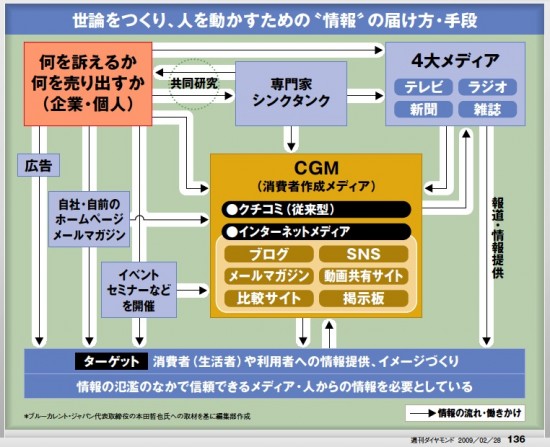
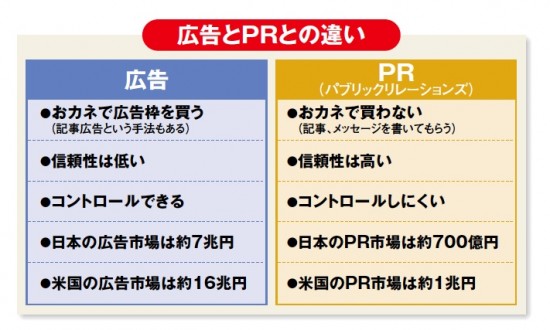

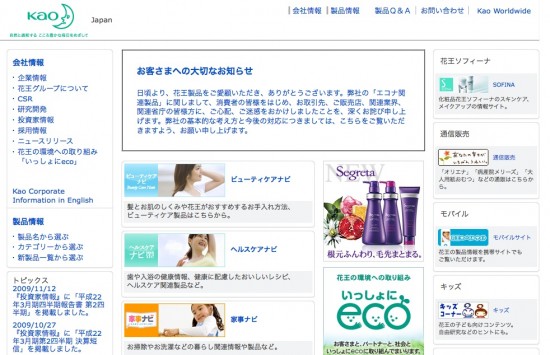
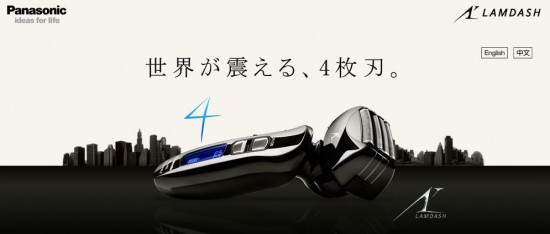
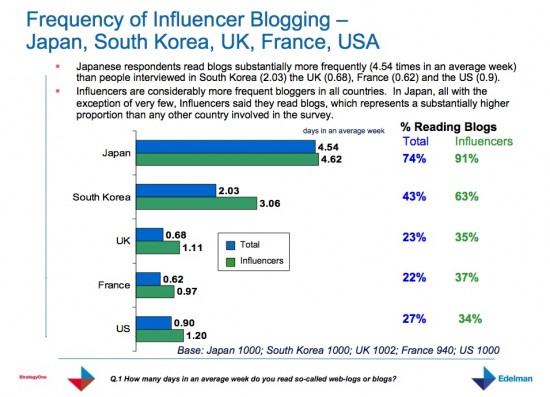
Glad it was useful!
Well done blog.Informative and easy to read. This was just the kind of ammo I was looking for to convince a client to quit buying TV ads.
I had to write a similar assignment on Twitter and marketing for a class, and I am really interested in this topic.
This was really well written and intriguing, and you made yourself very credible with the examples that you used. Unfortunately my Japanese isn't good enough to understand all of those charts, but from what I did understand they were effective. I'm surprised by those stats about the influence of blogs in all the countries – I had no idea blogging was quite that significant in Japan!
Awesome job, I enjoyed this! :)
Excellent Essay. Covers all the major points of CGM (in the US I have heard more people using the term “New Media Marketing” interchangeably with CGM, but it's the same exact thing really). I do this work for a living and I can tell you that it makes big bucks if you can get into a company that has no idea how to capitalize on this kind of marketing. (Sadly, I'm not making big bucks, as I got into a company that already knew how to capitalize :(… but I can guarantee there are still TONS of companies out there that have no idea how to get in on this marketing movement.
Great job! Enjoying your blog a bunch.
I didn't have the courage to read everything now, but it looks interesting. I'll come back on it later
Love rummaging through Don Quixote in Roppongi. Congrats on producing this great material on online marketing. Next step is to figure out how to optimize the use of CGM by smaller guys like the rest of us.
Thanks! Although originally it was an academic essay, I enjoyed writing it a lot due to all my work on this blog :)
I'm impressed by seeing an actual bibliography in a blog post!